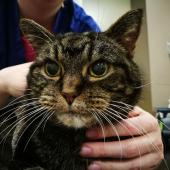Diabetes mellitus in cats : causes, symptoms and management
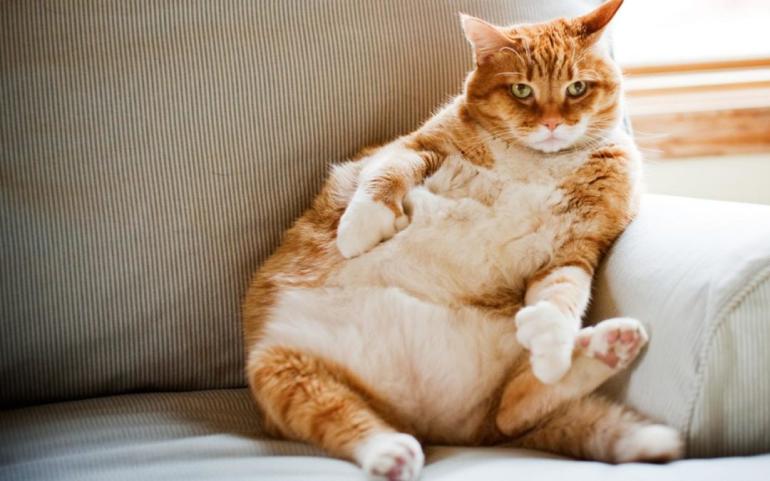
Diabetes mellitus, commonly known as diabetes, is a complex and chronic condition that affects both humans and animals, including cats. Feline diabetes mellitus is becoming increasingly prevalent, making it essential for cat owners to understand the causes, recognize the symptoms, and learn about effective management strategies to ensure the well-being of their feline companions.
Diabetes mellitus
Diabetes is being recognised more frequently in older pets. If untreated the disease has serious effects and will ultimately result in the death of your pet. The good news is that the majority of diabetic animals can now be treated and may live normal, happy lives if you are prepared to invest time and money in their care.

What is diabetes?
Diabetes is a condition brought on by insufficient insulin production in the body. One hormone that maintains blood sugar (glucose) at its ideal level is insulin. Food-derived sugar accumulates in the circulation and eventually begins to show up in the urine when there is insufficient insulin.
How would I know if my cat has diabetes?
Diabetes in animals results in elevated blood sugar levels and sugar loss in the urine. Despite having a healthy appetite, they frequently lose weight and are more thirsty than usual. If the ailment is not addressed, it may lead to the development of liver disease, gait issues, or other illnesses. If the initial indications of diabetes are disregarded, more severe symptoms like depression and vomiting could appear. If your pet's diabetes is not treated for several weeks or months, they may die from a coma.
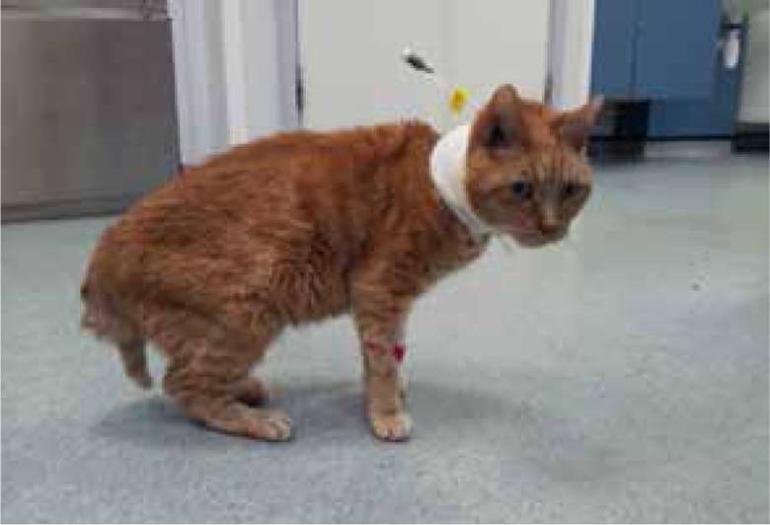
Symptoms of Feline Diabetes Mellitus
Recognizing the symptoms of diabetes in cats is crucial for early diagnosis and management:
-
Increased Thirst and Urination: Cats with diabetes often drink more water and urinate frequently.
-
Change in Appetite: Diabetic cats may exhibit changes in appetite, either eating more or losing interest in food.
-
Weight Loss: Despite an increased appetite, diabetic cats may lose weight due to the body's inability to utilize glucose for energy.
-
Lethargy: Cats with diabetes may appear lethargic and lack energy.
-
Sweet-Smelling Breath: An unusual sweet or fruity odor in the breath can be a sign of diabetes.

Why does my cat have diabetes?
If your feline companion has been identified as diabetic, you might be questioning whether you've made a mistake. Regretfully, certain cats are simply predisposed to the illness more than others. Although any cat can get diabetes, male cats are more likely to do so. Although there is a tiny increased risk of diabetes in fat cats, many obese cats do not acquire the condition. Your veterinarian will examine your cat to make sure it is not suffering from any other conditions as some other disorders might lead to the development of diabetes. In a few instances, managing the other illness will temporarily relieve the diabetes, but it will almost certainly return at some point.
Causes of Feline Diabetes Mellitus
The exact cause of diabetes in cats is not always clear, but several factors contribute to its development:
-
Obesity: Overweight cats are at a higher risk of developing diabetes.
-
Genetics: Some cat breeds are genetically predisposed to diabetes, including Burmese and Maine Coon cats.
-
Age: Older cats are more susceptible to developing diabetes, especially those over the age of 7.
-
Inactive Lifestyle: Lack of physical activity can increase the risk of obesity and diabetes.
-
Pancreatic Disease: Certain pancreatic diseases can affect insulin production.
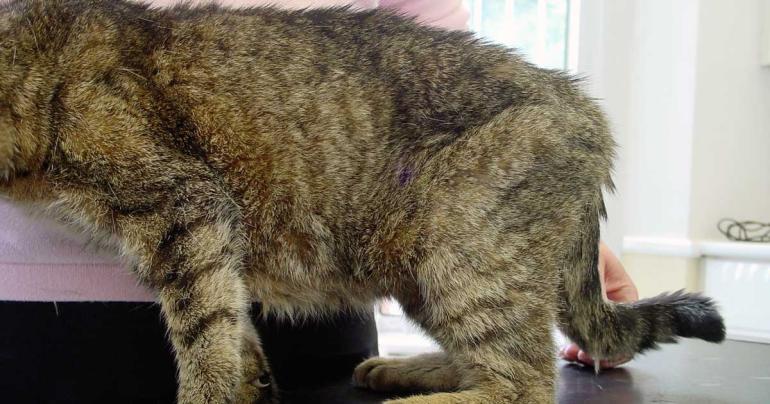
Can diabetes be treated?
For the majority of diabetic cats, daily insulin injections are necessary to maintain blood sugar control. For the duration of your cat's life, these injections must be administered on a regular basis (often once or twice a day) because diabetes seldom goes away entirely. Your veterinarian might need to assist you in coming up with a new diet and cat care schedule. Although injections need be administered at specific times each day, they can be scheduled to fit into your regular routine. You must follow the treatment plan going forward once it has been established.
Diagnosis & Management
Diagnosing diabetes in cats involves blood tests to measure blood glucose levels. Once diagnosed, management typically includes:
-
Insulin Therapy: Diabetic cats often require insulin injections to regulate blood sugar levels. Your veterinarian will determine the appropriate insulin type and dosage.
-
Dietary Changes: Specialized diabetic cat food with controlled carbohydrate content can help manage glucose levels. Feeding a consistent and balanced diet is essential.
-
Regular Monitoring: Monitoring blood glucose levels at home may be necessary, especially initially, to adjust insulin dosage as needed.
-
Weight Management: Encouraging weight loss through a controlled diet and regular exercise can help manage diabetes, especially in overweight cats.
-
Veterinary Care: Regular check-ups with a veterinarian are crucial for monitoring the cat's overall health, glucose levels, and adjusting the treatment plan if necessary.
Will my cat need insulin?
At some point, the majority of cats with diabetes will require insulin injections to treat their condition. For a period, weight decrease in some obese cats may help regulate their diabetes. For a small number of other cats, hypoglycemic medications (drugs that lower blood sugar) and strict weight control are the only options. Despite your concerns, most cat owners discover that administering injections is simpler than giving tablets to their feline after some practice.
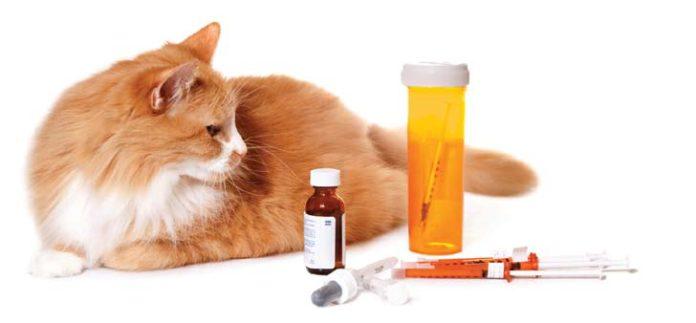
Why can't insulin be given as a tablet?
Being a protein, insulin can be digested just like any other protein. If insulin were administered as tablets, the stomach's acid would break the tablets down and the insulin would be ineffective. Insulin injections are administered subcutaneously and are painless.There are now dog and cat pens available that resemble the pens used for diabetes in humans.
I can't give my cat injections - what can I do?
Naturally, the majority of people worry that they won't be able to inject their pet. Your veterinarian will instruct you on how to administer these shots, and most pet owners of diabetic pets are comfortable doing so at home after a few weeks. Your veterinarian will likely visit you daily at the veterinary clinic and assist you in administering the injections until you feel comfortable doing so.
Does my vet need to keep seeing my cat?
It's important to keep an eye on your pet to make sure it doesn't gain or lose weight. To determine how well your pet is doing, your veterinarian should inspect them on a regular basis and go over their notes. To track progress, your veterinarian will likely urge you to keep an eye on your cat's water intake. Your veterinarian might occasionally need to draw blood from your cat; in such cases, they might need to admit your pet to the hospital for a day. Talk to your veterinarian if you have any worries about any part of your pet's care.
Will my cat be unwell while being treated for diabetes?
There are two important complications to be aware of:
- If left untreated, low blood sugar, or hypoglycemia, can cause irreversible brain damage. The symptoms appear suddenly. The primary ones are incoherence, tremors, twitches, convulsions, coma, and restlessness. Give sugar (preferably, for best results, glucose; you can get it from your veterinarian or a chemist) orally, as lumps, or dissolved in water. If your pet is still conscious, you can give them food and glucose if they choose to eat it. If any of these symptoms appear, call your veterinarian right once.
- Hyperglycemia, or high blood sugar, typically occurs more gradually and might cause your pet to become ill over several days. Your pet may go into a coma as the illness worsens, but they won't recover if you give them sugar solutions. If your pet is sick, call your veterinarian right away. They will likely want to admit your pet to the hospital.
Conclusion
Feline diabetes mellitus is a manageable condition with proper veterinary care, a balanced diet, and attentive monitoring. Cat owners play a vital role in their feline companions' well-being by recognizing the symptoms early, seeking prompt veterinary attention, and following the prescribed treatment plan. With dedication and proper management, diabetic cats can lead fulfilling lives and enjoy a good quality of life.


